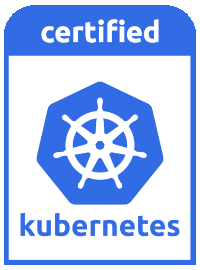Sonobuoy for CNCF Conformance and Kubernetes
Tiffany Jernigan
What is Sonobuoy
Sonobuoy is used to certify that your cluster is CNCF Kubernetes conformant (Certified Kubernetes).

This software conformance is a minimum standard that the industry expects. There is an expectation that every conformant cluster supports the required APIs. For instance, all of your kubectl commands should work. You should be able to take YAML from one place to another and, if the cluster is conformant, it will work. Conformance is important, which is why we have included Sonobuoy testing as part of VMware Tanzu Community Edition.
Sonobuoy has three main features:
- Conformance testing
- Workload debugging
- Custom tests and collection via plug-ins
In this guide we will focus on conformance testing.
To see an in-depth description of Sonobuoy, check out our guide on automated cluster acceptance testing or check out the Sonobuoy page.
Prerequisites
- Tanzu Community Edition–managed cluster
jqfor JSON formatting
Setting up the cluster
If you already have two untainted nodes, skip this section.
Untainted nodes are nodes that you can schedule pods on, such as worker nodes. Check out the taints and tolerations docs to learn more.
As of Kubernetes 1.23, Sonobuoy requires at least two untainted nodes.
Until Tanzu Community Edition v0.11.0 comes out, only managed clusters can support more than one node.
If you have an existing development (instead of production) cluster, it may only have one worker node since that’s the default.
Check how many worker nodes you have with the tanzu CLI:
tanzu cluster get <workload-cluster-name>
If you have only one worker node, Sonobuoy will throw the following error:
[sig-apps] Daemon set [Serial] should rollback without unnecessary restarts [Conformance]
We will take a look at how to see what is causing your errors a little later.
If it has only one worker node, we can scale up:
tanzu cluster scale <workload-cluster-name> --worker-machine-count <2 or some larger number>
To see more about cluster scaling, check out the Tanzu Community Edition documentation.
Sonobuoy in action
With a Tanzu Community Edition cluster, Sonobuoy is built into the tanzu CLI, so you don’t need to worry about installing it.
-
Take a look at the options:
tanzu conformance -h -
You can take a look at both the Tanzu Community Edition version and the Sonobuoy version here:
tanzu conformance versionHere’s mine:
tanzu conformance version Sonobuoy Version: v0.53.2 TCE Version: v0.10.0 TCE SHA 57d28405 -
Now, run a conformance test:
tanzu conformance runINFO[0001] created object name=sonobuoy namespace= resource=namespaces INFO[0001] created object name=sonobuoy-serviceaccount namespace=sonobuoy resource=serviceaccounts INFO[0001] created object name=sonobuoy-serviceaccount-sonobuoy namespace= resource=clusterrolebindings INFO[0001] created object name=sonobuoy-serviceaccount-sonobuoy namespace= resource=clusterroles INFO[0001] created object name=sonobuoy-config-cm namespace=sonobuoy resource=configmaps INFO[0001] created object name=sonobuoy-plugins-cm namespace=sonobuoy resource=configmaps INFO[0001] created object name=sonobuoy namespace=sonobuoy resource=pods INFO[0001] created object name=sonobuoy-aggregator namespace=sonobuoy resource=services -
Check the status:
tanzu conformance status PLUGIN STATUS RESULT COUNT PROGRESS e2e running 1 1/337 (0 failures) systemd-logs complete 3 Sonobuoy is still running. Runs can take 60 minutes or more depending on cluster and plugin configuration.If you check early enough, there may not be any progress listed.
Come back in about an hour and check again :).
tanzu conformance status PLUGIN STATUS RESULT COUNT PROGRESS e2e complete 1 337/337 (0 failures) systemd-logs complete 4 -
Retrieve results:
tanzu conformance retrieve<file-name>.tar.gz -
Inspect results:
tanzu conformance results $(tanzu conformance retrieve)Here’s what mine looks like:
Plugin: e2e Status: passed Total: 5771 Passed: 337 Failed: 0 Skipped: 5434 Plugin: systemd-logs Status: passed Total: 4 Passed: 4 Failed: 0 Skipped: 0 -
If you have an error, you can take a look at the logs to figure out what caused it.
tanzu conformance results --mode detailed --plugin e2e $(tanzu conformance retrieve) \ | jq -r '. | select(.status == "failed") | .details' \ | sed 's/\\n/\n/g' | sed 's/\\t/\t/g'The
sedcommands are to change new line and tab characters to their actual form.You can also find all of this in the zipped tarball.
mkdir <directory-name> tar -xvf <tar.gz> -C <directory-name> cd <directory-name>You can look for
FAILinplugins/e2e/results/global/e2e.log. This should look very familiar.You could also look inside of
plugins/e2e/results/global/junit_01.xml.grep -B 1 "failure type" plugins/e2e/results/global/junit_01.xmlThere is also more information in there, such as in the
system-outsection, which you can see if you look in the file.To check out more ways to determine the cause of test failures, check out the Sonobuoy docs.
Learn more
If you didn’t follow along, try downloading Tanzu Community Edition. You can also try Tanzu Community Edition locally with unmanaged clusters, or you can try it out without spinning up your own clusters via free workshops on the Tanzu Developer Center.
To learn more about Sonobuoy and Kubernetes conformance testing, check out the following: